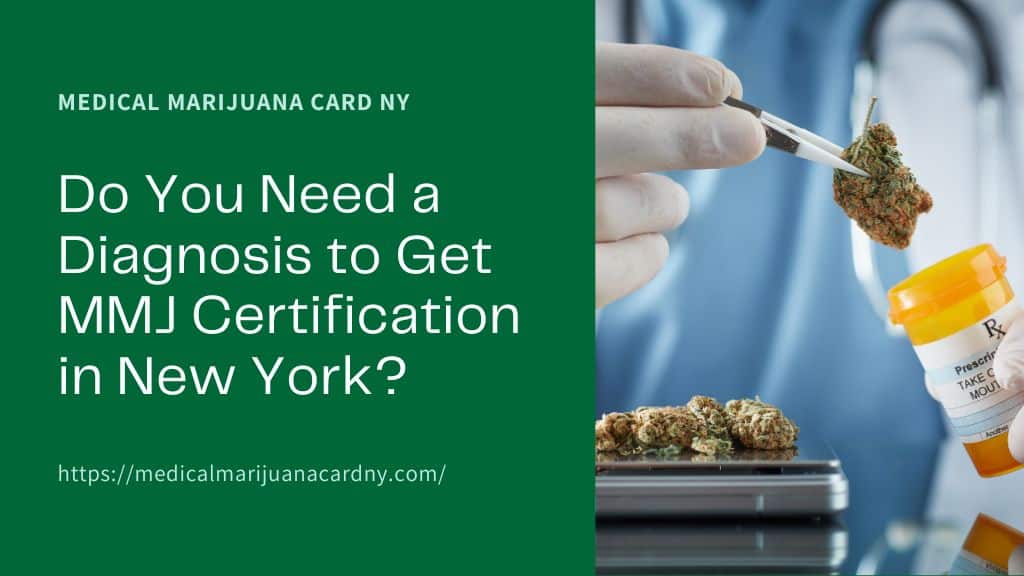In New York, medical marijuana has become a significant alternative for managing pain, offering a natural and potentially effective solution. Governed by the Marijuana Regulation and Taxation Act, the state ensures a regulated and safe approach to accessing medical marijuana. This act, administered by the Office of Cannabis Management, focuses on public health and safety, ensuring that medical marijuana products meet strict quality standards.
For New Yorkers experiencing pain, medical marijuana presents an option worth considering, especially for those seeking alternatives to traditional pain medications. With its evolving legal landscape and comprehensive regulatory framework, New York stands at the forefront of integrating medical marijuana into pain management strategies.
Table of Contents
ToggleIntroduction to Pain Management and Medical Marijuana
What is Pain and How Does it Affect Individuals in New York?
Pain, a complex and subjective experience, significantly impacts individuals in New York. It is a symptom associated with a wide range of medical conditions, from arthritis to nerve damage. In New York, over 3 million residents live with the pain of arthritis, a common cause of chronic discomfort. Pain affects daily life, limiting activities and reducing the quality of life. It can manifest in various forms, from acute, sharp sensations to chronic, dull aches, and its management is a critical aspect of healthcare in the state.
How Can Medical Marijuana Be a Solution for Pain Management?
Medical marijuana offers a novel approach to pain management, especially for chronic pain that plagues millions of Americans. Its appeal lies in its safety profile, being less addictive and having fewer side effects compared to opiates. Medical marijuana, particularly its components THC and CBD, works by interacting with the body’s endocannabinoid system, which plays a key role in regulating pain. This interaction can help alleviate pain, reduce inflammation, and improve the overall quality of life for patients suffering from chronic pain conditions.
Understanding Medical Marijuana
What is Medical Marijuana and How Does it Work for Pain Relief?
Medical marijuana comprises various compounds from the Cannabis sativa plant, primarily THC and CBD. THC is known for its psychoactive effects, while CBD is non-psychoactive and is associated with pain relief. According to Harvard Health, medical marijuana is effective for chronic pain, including nerve pain and muscle spasms. It works by interacting with cannabinoid receptors in the body, which are part of the endocannabinoid system involved in pain sensation, mood, and memory.
Which Active Components in Medical Marijuana Are Effective for Pain?
The active components in medical marijuana effective for pain are THC and CBD. THC, or tetrahydrocannabinol, is the primary psychoactive component that can also provide pain relief and reduce inflammation. CBD, or cannabidiol, is known for its therapeutic properties without the psychoactive effects. CBD is particularly effective in reducing inflammation and neuropathic pain. Together, these compounds can offer a synergistic effect, enhancing pain relief while minimizing psychoactive effects, making medical marijuana a viable option for pain management.
Legal Landscape in New York
What Are the Current Legal Regulations for Medical Marijuana in New York?
In New York, the Marijuana Regulation and Taxation Act governs the use of medical marijuana. This comprehensive regulatory structure oversees the licensure, cultivation, production, distribution, sale, and taxation of medical marijuana within the state. The Office of Cannabis Management administers these regulations, ensuring product safety and quality. The act also emphasizes social justice and public health, actively encouraging participation from communities impacted by previous prohibition policies.
How Has New York’s Legal Stance on Medical Marijuana Evolved for Pain Management?
New York’s legal stance on medical marijuana has evolved significantly, particularly in the context of pain management. The state recognizes the therapeutic potential of medical marijuana for various conditions, including chronic pain. This recognition has led to the development of a regulated system that allows patients with pain-related conditions to access medical marijuana as a part of their treatment plan, under the guidance of certified healthcare providers.
Obtaining Medical Marijuana in New York
How Can Residents in New York Obtain Medical Marijuana for Pain?
Residents in New York can obtain medical marijuana for pain management by first consulting with a healthcare provider registered with the New York State Medical Marijuana Program. If deemed appropriate, the provider will issue a medical marijuana certification, allowing the patient to purchase medical marijuana from registered dispensaries across the state. This process ensures that patients receive medical marijuana safely and legally for pain management.
What is the Process of Getting a MMJ Certification in New York for Pain Management?
The process of obtaining a Medical Marijuana (MMJ) certification in New York for pain management involves several steps:
- Consultation: Patients must consult with a registered healthcare provider to discuss their pain condition and suitability for medical marijuana treatment.
- Certification Issuance: If the healthcare provider determines that medical marijuana is appropriate, they will issue a certification specifying the approved form and dosage.
- Purchasing Medical Marijuana: With the certification, patients can visit registered dispensaries to purchase medical marijuana products suitable for their pain management needs.
- Follow-up and Monitoring: Regular follow-up appointments with the healthcare provider are recommended to monitor the effectiveness and adjust the treatment as necessary.
This process, regulated by the Office of Cannabis Management, ensures that patients in New York have access to medical marijuana for pain management in a safe and controlled manner.
Usage Guidelines
How Should Medical Marijuana Be Used Safely for Pain Management?
For safe use of medical marijuana in pain management, it’s crucial to start with a consultation with a healthcare provider knowledgeable in its use. Patients should begin with low dosages and gradually increase as needed, closely monitoring for any side effects. It’s important to use the administration method recommended by the healthcare provider, whether it be smoking, vaping, edibles, or oils.
Regular follow-up appointments are essential to assess the effectiveness and make any necessary adjustments. Patients should also be aware of potential interactions with other medications and avoid operating heavy machinery or driving while under the influence of medical marijuana.
What Are the Recommended Dosages and Strains of Medical Marijuana for Pain Relief?
The recommended dosages and strains of medical marijuana for pain relief vary based on individual needs and medical conditions. Generally, strains with higher CBD content are preferred for their pain-relieving and anti-inflammatory properties without significant psychoactive effects. Indica strains are often recommended for their relaxing and sedative effects, which can be beneficial for pain relief.
Dosages should be personalized, starting low and gradually increasing to find the effective dose for pain management. Consulting with a healthcare provider is crucial to determine the appropriate strain and dosage.
Comparing Medical Marijuana with Traditional Pain Medications
How Does Medical Marijuana Compare to Traditional Pain Medications?
Medical marijuana offers a different mechanism of action compared to traditional pain medications. While opioids and NSAIDs work by blocking pain signals and reducing inflammation, medical marijuana interacts with the body’s endocannabinoid system, which can help in modulating pain and inflammation. Medical marijuana is often considered safer than opioids, as it has a lower risk of overdose and addiction. It can be a viable option for patients who do not respond well to traditional pain medications or experience significant side effects.
Why Might Medical Marijuana Be a Preferred Option for Pain Management in Some Cases?
Medical marijuana might be preferred for pain management in some cases due to its efficacy in treating various types of pain, including chronic pain, nerve pain, and pain associated with conditions like multiple sclerosis and fibromyalgia. Its ability to provide pain relief with fewer side effects compared to opioids makes it an attractive option. Additionally, medical marijuana can improve the quality of life by alleviating pain-related symptoms, enhancing sleep, and reducing anxiety. For patients seeking a natural alternative to traditional pain medications, medical marijuana offers a promising solution.
Potential Risks and Side Effects
What Are the Potential Risks and Side Effects of Using Medical Marijuana for Pain?
While medical marijuana is a beneficial option for pain management, it comes with potential risks and side effects. According to the Mayo Clinic, these may include increased heart rate, dizziness, impaired concentration and memory, and slower reaction times. There’s also a risk of negative drug-to-drug interactions, increased risk of heart attack and stroke, increased appetite, potential for addiction, hallucinations or mental illness, and withdrawal symptoms. It’s important to note that some medical marijuana formulations are designed to provide symptom relief without the intoxicating effects associated with recreational use.
How Can Patients Minimize Risks When Using Medical Marijuana for Pain Management?
Patients can minimize risks when using medical marijuana for pain management by following several guidelines:
- Consultation with Healthcare Providers: Before starting medical marijuana, consult with a healthcare provider knowledgeable in its use for pain management. This ensures appropriate use and monitoring.
- Start with Low Dosages: Begin with a low dose and gradually increase it as needed, under medical supervision, to minimize potential side effects.
- Monitor for Side Effects: Be vigilant about any side effects and report them to your healthcare provider immediately.
- Avoid Operating Machinery: Due to potential effects on concentration and reaction times, avoid operating heavy machinery or driving when using medical marijuana.
- Check Interactions with Other Medications: Discuss with your healthcare provider about any other medications you are taking to avoid negative drug interactions.
- Use as Prescribed: Follow the recommended administration method and dosage prescribed by your healthcare provider.
- Regular Follow-up: Maintain regular follow-up appointments with your healthcare provider to monitor the effectiveness and make any necessary adjustments.
By adhering to these guidelines, patients can use medical marijuana more safely and effectively for pain management. It’s essential to maintain open communication with your healthcare provider throughout the treatment process.
Conclusion
In New York, medical marijuana has emerged as a significant alternative for pain management, offering a natural and potentially effective solution. Governed by the Marijuana Regulation and Taxation Act, the state ensures a regulated and safe approach to accessing medical marijuana. This act, administered by the Office of Cannabis Management, focuses on public health and safety, ensuring that medical marijuana products meet strict quality standards.
For New Yorkers experiencing pain, medical marijuana presents an option worth considering, especially for those seeking alternatives to traditional pain medications. With its evolving legal landscape and comprehensive regulatory framework, New York stands at the forefront of integrating medical marijuana into pain management strategies.
Addition Resources
https://www.ncbi.nlm.nih.gov/books/NBK224384/
https://www.ncbi.nlm.nih.gov/books/NBK574562/
https://www.cdc.gov/marijuana/health-effects/chronic-pain.html





